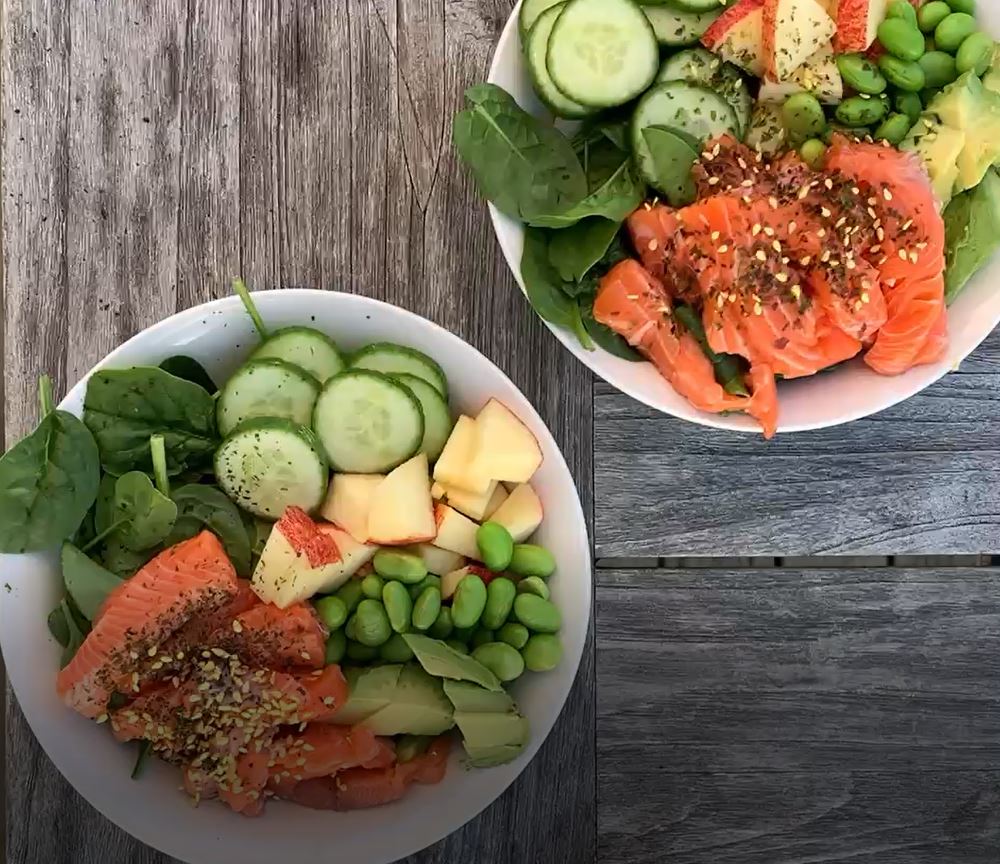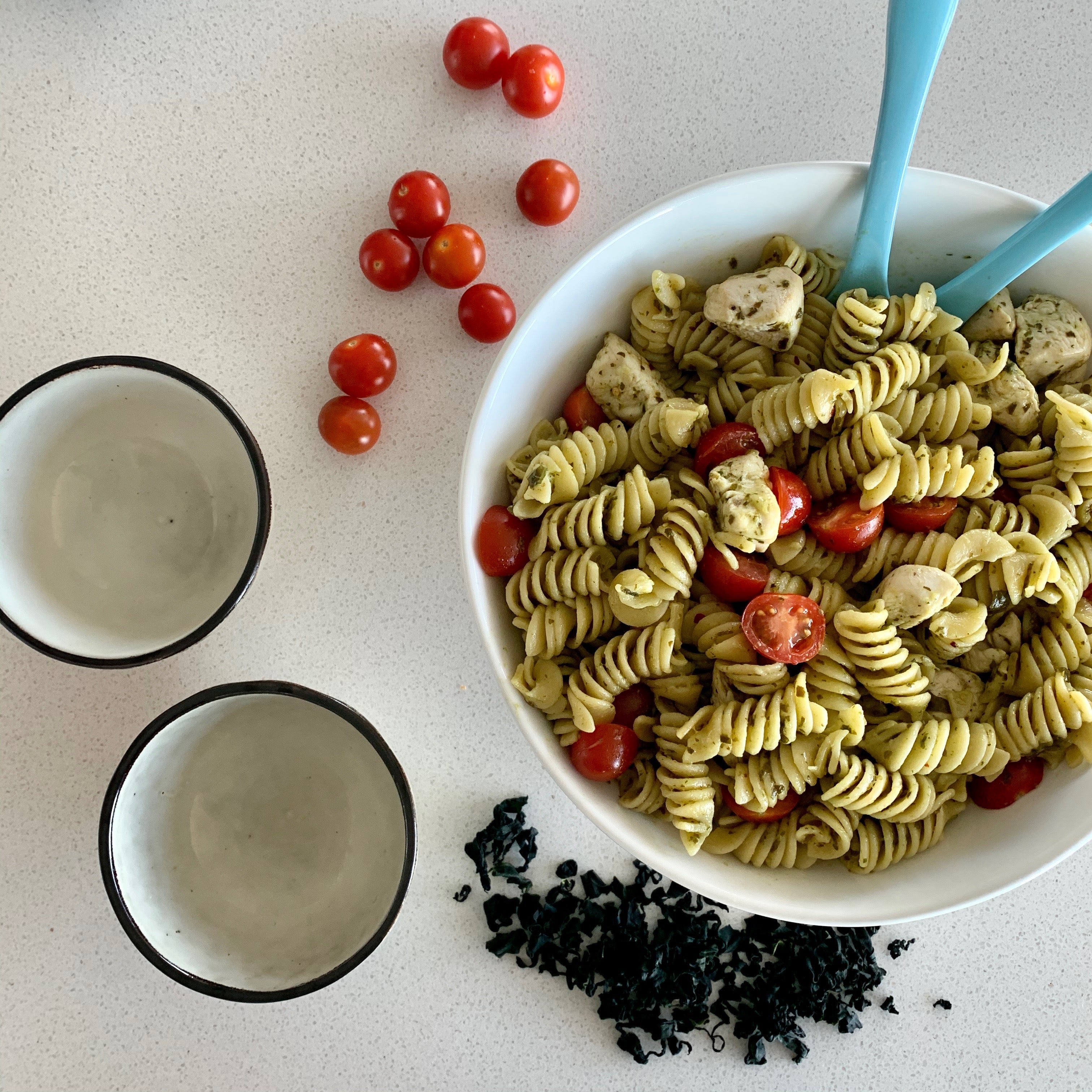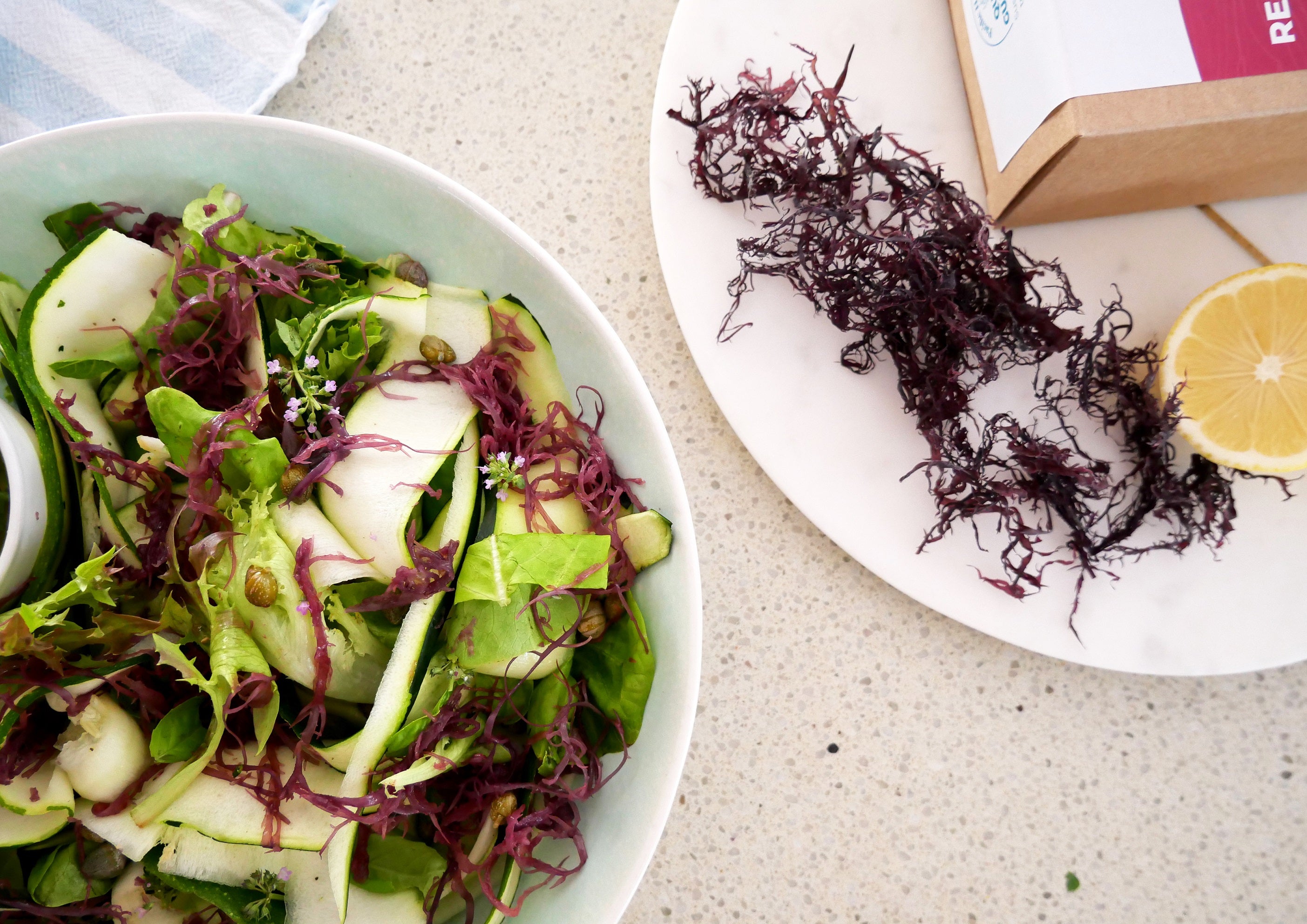If you are new to the world of edible seaweed our top 10 tips for eating seaweed may be a good place to start. These tips will maximise the nutritional benefits seaweeds bring and help you create more delicious meals.
Here are our top 10 Tips for eating seaweeds!
1. Eat seaweeds raw (less cooking is better)
Many commercially available seaweed products have been highly processed and, in some cases, deep fried! You may be surprised to read about the fat content in some of popular seaweed snacks.
Pacific Harvest’s seaweeds are raw and largely unprocessed. Our seaweeds are mostly air-dried, maintaining the nutrient density they naturally absorb from the ocean as they grow. Cooking seaweed can reduce its nutritional value because some nutrients (especially enzymes and specific vitamins) are affected by heat. There are a few exceptions to this, such as kombu, which is usually heated (never boil it) to make stocks, and agar, which needs to be ‘melted’ to activate its ‘jellifying’ properties. When you rehydrate seaweed in tepid water (rather than hot), or add it at the end of cooking, you preserve nutrients that will nourish your body.
2. Some seaweeds need rehydrating (in minutes)
Our entire range is ambient, but as the seaweed comes into contact with moisture (cooking/steam), it will begin to rehydrate. Thicker sea plants such as kombu and sea spaghetti require additional time to rehydrate; perhaps add an extra 30 minutes to your preparation time. Rehydrate seaweeds in tepid water instead of cold water to speed up the process.
3. A little seaweed goes a long way!
Seaweeds will expand about 5-10 times when you rehydrate them. You don’t need to add too much to every meal (the mineral content is very high - just watch the iodine content!), so only rehydrate what you need, as they need to be consumed relatively soon after being rehydrated. Experiment with small amounts first until you get used to how each variety expands.
4. Reuse the water you have soaked your seaweed in
The water you soak your seaweed in to rehydrate it is highly nutritious and can be used in various ways, including in DIY beauty treatments, smoothies, soups or stocks. Add it to your house plants or put it in your pet’s bowl.
5. Experiment with the different seaweed flavours
Seaweeds like Sea Spaghetti will absorb the flavour of whatever you soak it in, so try soaking it in tea, lemon water or alcohol. Some seaweeds like Nori can take on a different flavour and texture depending on how you prepare them- for example, roast nori on low heat for a more nutty flavour and crunchy texture, or pop it into a tomato-based sauce as a vegan alternative to anchovy flavour. Heat Dulse leaves to intensify their naturally smoky flavour.
6. Store seaweeds carefully to extend shelf life
Seaweeds are hygroscopic, which will absorb moisture from surrounding air or ingredients. Seal your bag after opening it using our resealable sticker or a clothes peg to keep it dry and preserve shelf life. Some, like Sea Lettuce, are especially sensitive to the light, so keep them in their box in the pantry to protect their vibrant colours from the light. Stored well in dry, cool, dark places, dried seaweeds can last years. The complex salts that are part of their makeup act as natural preservatives and keep bugs & fungus away.
7. Use seaweed as an alternative to salt in any meal preparation or serving.
All seaweeds have some sodium but far less than regular table salt. They contain potassium, which balances sodium, yet still offers the salty flavours we love. Salt cravings often indicate your body needs more nutrients – seaweed is the perfect solution! Brown seaweeds tend to have higher sodium content, but still a tiny amount compared to pure salt.
8. Season everyday meals with seaweed seasoning for umami flavour
The easiest way to add a little seaweed to every day is to use it as a seasoning for your meals. There is no need to reinvent the wheel; just add it to what you already do. Because of their nutrient density, only a sprinkle is required. In fact, it is possible to overeat seaweed – particularly if you have thyroid sensitivity. Seaweeds are a wonderfully chemically free way to season your food to boost umami flavours.
9. Use kelp seaweed to tenderise and soften meat and beans.
Kelp contains enzymes that soften cell walls. Using kelp as a rub on meat is an excellent (lower sodium) option for tenderising meat and infusing umami flavours. Put a strip or leaf of kombu into the pot whilst soaking beans to speed up the process and make the beans easier to digest when eaten.
10. Eat the seaweed colour rainbow - green, brown and red.
Eating a range of seaweeds of different colour groups brings other minerals and nutrients, different flavours and textures. Get started with the power of three or our seaweed seasoning range which contains a blend of different colours.
Pacific Harvest specialises in edible sea vegetables in various formats; browse our recipes for seaweed inspiration.
Disclaimer: This material is provided for educational purposes only and is not a substitute for professional medical advice, diagnosis, or treatment. This information may include something other than the latest research. We encourage you to do your research and discuss your findings with a qualified health practitioner who can help you validate the outcomes in the context of your specific & individual health situation.




